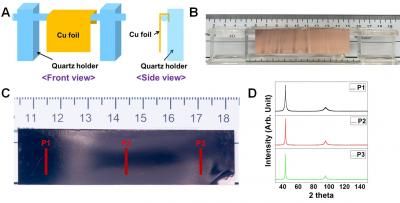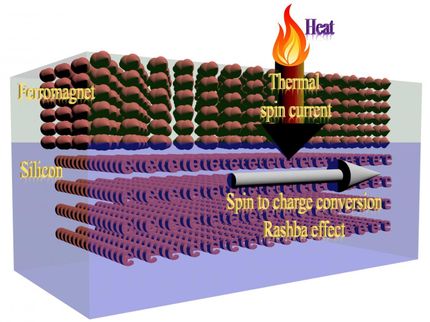New physics and application of antiferromagnet uncovered
The research group of Professor Hideo Ohno and Associate Professor Shunsuke Fukami of Tohoku University has studied the control of magnetization using a current applied to heterostructures comprising an antiferromagnet. They found that the current gives rise to a flow of electron spin in the antiferromagnet, which induces magnetization switching in a neighboring ferromagnet.
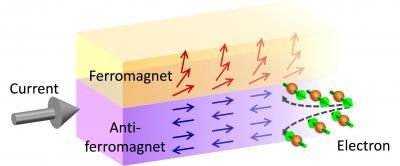
Schematics of the antiferromagnet-ferromagnet bilayer system studied in this work. The current applied to the bilayer gives rise to a flow of electron spin in the perpendicular direction to the film plane. The magnetization of ferromagnet in the vicinity of interface is biased in the film plane direction due to an interaction with the antiferromagnet, which allows for the field-free switching.
Shunsuke Fukami
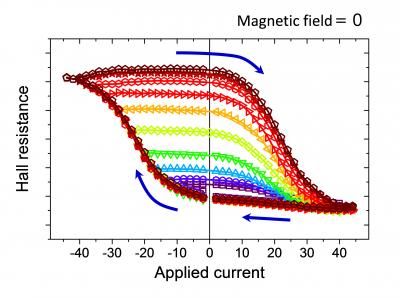
The Hall resistance versus applied current measured at zero magnetic fields. The Hall resistance represents the perpendicular component of magnetization. The reversed component of magnetization depends on the magnitude of applied current.
Shunsuke Fukami
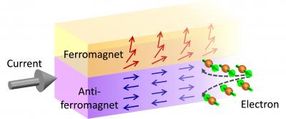
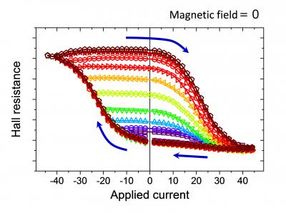
The obtained results shed light on a new physics of antiferromagnet and also open various pathways toward ultralow-power integrated circuits and other novel applications such as neuromorphic computing.
Spintronics devices that can store information via the magnetization direction under no power supply, are expected to realize ultralow-power integrated circuits. A key issue for the application is how to achieve a fast and reliable magnetization switching with low power consumption.
Recently, a switching scheme utilizing the flow of electron spin, the so-called spin current, originating from the spin-orbit interaction, has attracted a great deal of attention as a new method to achieve fast and reliable control of magnetization. This scheme has been observed in heterostructures typically consisting of ferromagnet and nonmagnetic heavy metal layer and is called the spin-orbit torque induced magnetization switching.
The research group investigated the spin-orbit torque induced switching in an antiferromagnet-ferromagnet bilayer system. Until now, the motion of electron spin in antiferromagnetic materials has not yet been studied well. They fabricated switching devices from a stack with an antiferromagnetic PtMn and a ferromagnetic Co/Ni multilayer, and electrically evaluated the switching properties at room temperature. They found that the current flowing in the antiferromagnet generates a spin-orbit torque large enough to induce the magnetization switching in the neighboring ferromagnet.
It is notable that whereas the spin-orbit torque switching in nonmagnet-ferromagnet bilayer systems studied previously requires in-plane external field, the present system allows field-free switching owing to a unique property arising at the antiferromagnet-ferromagnet interface.
Furthermore, they found that in specific stack structures, the reversed portion of magnetization can be controlled in an analogue manner by the magnitude of the applied current, and this feature can also be attributed to the nature of the antiferromagnet.
This work is significant from both the physics and application points of view. In terms of physics, the obtained results allow for deeper understanding of antiferromagnet and spin transport phenomena, such as the topological Hall effect. In terms of application, the external-field-free switching achieved in this work shows promise for the implementation of spin-orbit torque devices for future ultralow-power integrated circuits. In addition, since the analogue-like behavior observed here resembles the operation manner of synapses in the brain, the present antiferromagnet-ferromagnet device could be key to realizing neuromorphic computing, which is known to achieve efficient information processing.
